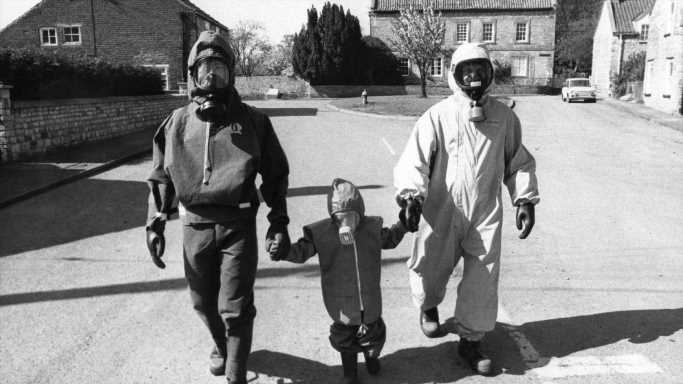
How Close the Human Race Came to Ending Life on Earth Every Year Since 1947
November 3, 2022Nuclear war and climate change are the main dangers our world currently faces. The probability of those catastrophes actually happening is measured by the Doomsday Clock, which reflects how close we are to destroying our world. The closer the clock gets to midnight, the more dire the situation is. If the clock hits midnight, well, that means the world has ended. Thankfully, we are not at that point yet, though we are closer than ever.
The Doomsday Clock was created by the Bulletin of the Atomic Scientists, founded by Albert Einstein and scientists who worked on the atomic bomb in the Manhattan project. It is set annually. For the past two years, the clock has been set at 100 seconds to midnight.
24/7 Wall St. reviewed the timeline of the Doomsday Clock to list the number of minutes and seconds to midnight for each year since 1947, the first year the Bulletin of the Atomic Scientists, a nonprofit science and global security organization, began using the clock. We included the number of nuclear tests conducted each year, from the nonprofit arms control group The Arms Control Association.
The Bulletin of the Atomic Scientists first emphasized the threat of nuclear annihilation as East and West nations raced to build atomic weapons after World War II. Over the ensuing years, the U.S. and the Soviet Union (now Russia) took steps to pull back from the nuclear brink. The best years, when the clock was furthest away from midnight, were after the dissolution of the Soviet Union, from 1991 through 1994. (This is what a nuclear attack would do to the world’s major cities.)
More recently, the dangers from North Korea and Iran developing their nuclear program have been affecting the clock position. In the past months, too, Russia’s President Vladimir Putin has been threatening to use nuclear weapons in Ukraine as Moscow suffers setbacks in its invasion of the country.
In 2007, the Bulletin scientists also warned for the first time of the damage climate change could inflict on the planet. In 2015, the clock moved closer to midnight, from five to three minutes to midnight, largely because of climate change. (Here are countries facing the worst climate emergencies.)
Not all the major events that have affected the clock’s position have to do with nuclear proliferation, yet they are just as dangerous to humanity’s and the planet’s safety. For example, as COVID-19 spread across the globe and a pandemic declared in 2020, the clock was advanced from two minutes to midnight to 100 seconds to midnight, where it remains since.
Some years were actually good in terms of human achievement. In 1969, the U.S. landed a man on the moon, and the clock went from seven minutes to midnight to 10. The clock has not had a good year since 2010.
Click here to see how close the human race came to ending life on earth on every year since 1947.
Sponsored: Tips for Investing
A financial advisor can help you understand the advantages and disadvantages of investment properties. Finding a qualified financial advisor doesn’t have to be hard. SmartAsset’s free tool matches you with up to three financial advisors who serve your area, and you can interview your advisor matches at no cost to decide which one is right for you. If you’re ready to find an advisor who can help you achieve your financial goals, get started now.
Investing in real estate can diversify your portfolio. But expanding your horizons may add additional costs. If you’re an investor looking to minimize expenses, consider checking out online brokerages. They often offer low investment fees, helping you maximize your profit.
Source: Read Full Article


